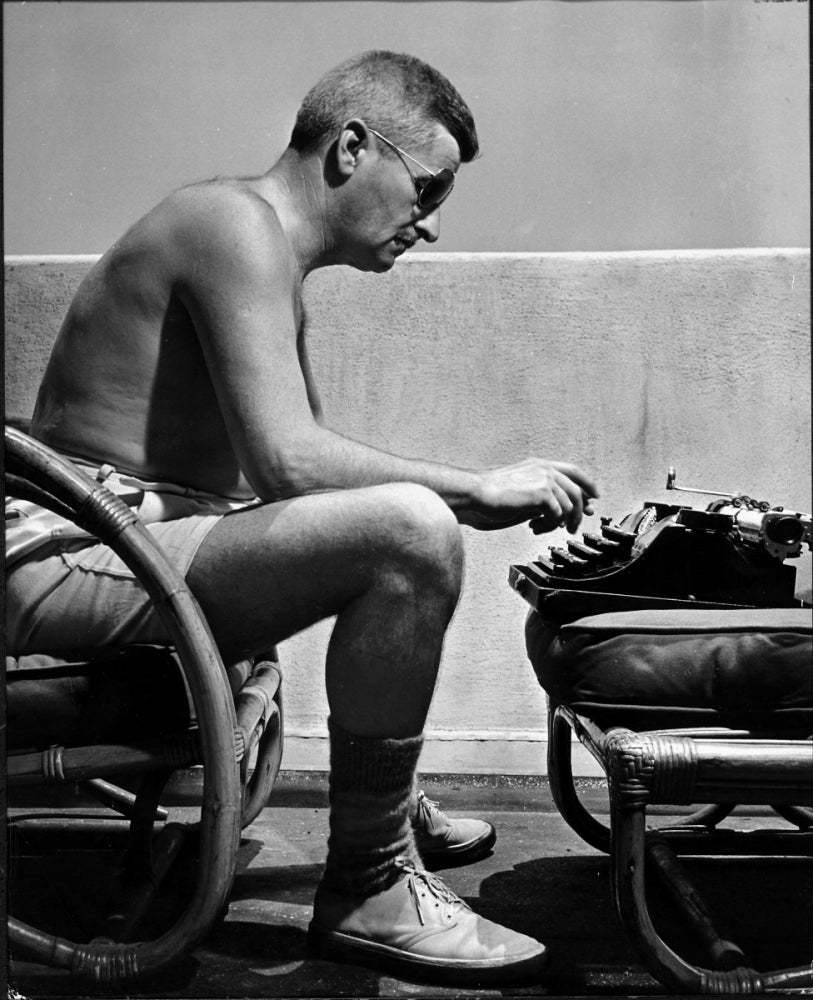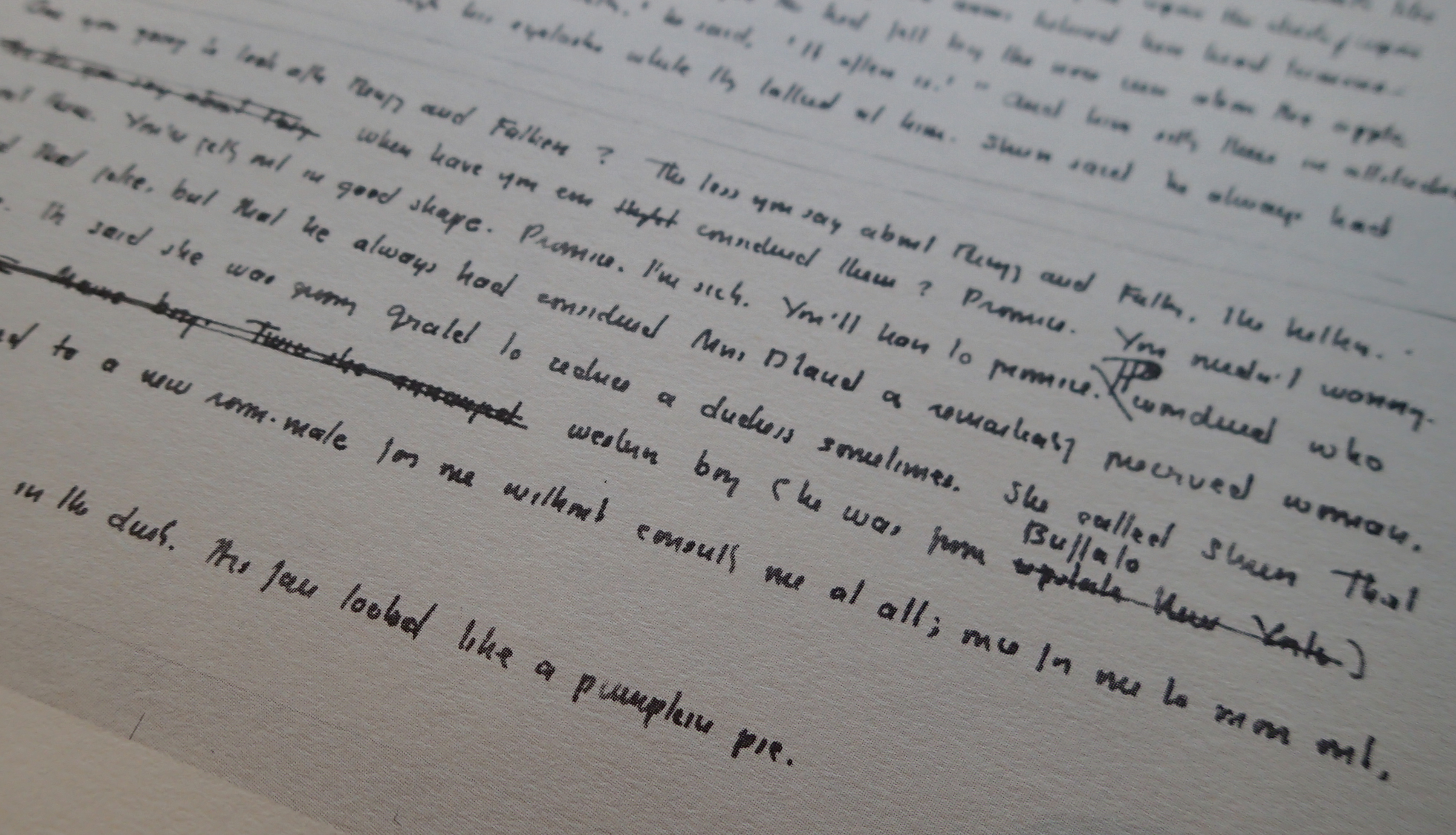Faulkner in His Own Hand


William Faulkner is widely considered one of the greatest 20th-century writers, but his prose, with its run-on sentences and oddly placed punctuation marks, isn’t exactly easy to grasp or to follow. Many puzzled readers have longed for a window into his thinking.
Students at UC Santa Barbara now have access to such an aperture. The campus’s library has acquired a 44-volume facsimile edition of manuscripts of the American author’s best-known works — some handwritten, others typed and some in both forms. They include strikeouts, substitutions, and even some fairly extensive, late-in-the-process rewriting.
“Looking at the editorial markings, it feels as if one is having a conversation with Faulkner,” said Candace Waid, a professor of English at UC Santa Barbara. “You have the best critic in the world holding up a mirror to the work. It’s as if Faulkner was speaking to you directly.”
The acquisition of the manuscripts, which were originally published in 1987, will be celebrated from 3 to 5 p.m. Feb. 12 in the UC Santa Barbara Library. Short talks by students who have undertaken archival research on Faulkner’s work will be followed by a panel discussion on its meaning and continued relevance. A reception will follow.
The hunt for a rare copy of the facsimile manuscripts was inspired by a trip Waid and 14 of her students took to the University of Virginia in 2018, thanks to a grant from philanthropist and UC Santa Barbara English department alumnus John Arnhold. The budding scholars, including Aili Pettersson Peeker and Maite Urcaregui, spent a day looking through that library’s collection of actual Faulkner manuscripts.
“I spent almost all of my time looking at one chapter of ‘Light in August,’” said Pettersson Peeker, who discovered the writer in her high-school library in rural Sweden. “You can see how Faulkner was thinking of every word, how he would change words even very late in the writing process.
“Slowing down the reading process to that extreme level, where you pay attention to every word, will be one reason the archives will be very useful,” she added. “It will provide our students with ideas, new appreciation for the work, and a new level of critical awareness.”
Waid was aware of the existence of the facsimiles; she had worked with one set when she taught at Yale University before joining the faculty here at UC Santa Barbara. Based on her students’ excitement, she asked Research and Engagement Librarian Jane Faulkner — no relation to the writer — to keep an eye out for when one might come on the market.
“It was Candace who ultimately found this set,” Faulkner recalled. “It was being sold by a vendor in Ohio who magically appeared with the entire 44-volume set in March 2019. It was almost too good to be true!”
She snapped it up immediately. It’s now in the UC Santa Barbara Library’s Department of Special Research Collections.
The set is incredibly valuable to scholars, according to Urcaregui, a doctoral candidate in the English department. “Seeing these revisions in the facsimile manuscript allowed me to make arguments about the structure of the text and its relationship to the content in ways that I could not with only the published version. You also get a closer sense of the materiality of Faulkner’s creative process, how he would cut and paste entire chunks of text from previous drafts into the manuscript.”
“You can really see all the thought that has gone into this material,” added Pettersson Peeker. “What you see through the manuscripts is the pain, and the labor, that went into creating that order within what at first seems to be chaos.
“He destroyed a lot of his early drafts; these manuscripts come from late in his creative process,” she continued. “Even so, we can see the changes he made, and where his editors messed with his writing. There were points where Faulkner would use five or six or seven periods to signal ellipses, and the editors would change that to a standard number. I’m sure he wouldn’t have approved that.”
Insights into his creative process, as shown in the manuscripts, will be one topic of discussion during the Feb. 12 event. The researchers will also talk about Faulkner and the blues, as well as his approaches to race, gender and sexuality.
That diverse lineup suggests one reason his writing remains so relevant. The winner of the 1949 Nobel Prize for Literature, Faulkner touched on subjects that arguably resonate more strongly today than they did in his era, including the painful legacy of slavery and the sacredness of the natural world.
“Except for Shakespeare, Faulkner is the most written-about writer in the English language,” noted Waid, who has been studying and teaching his work for more than 40 years. “His work presents an extreme amount of difficulty, but it is worth it.”
More information about the event may be found at the UC Santa Barbara Library.




